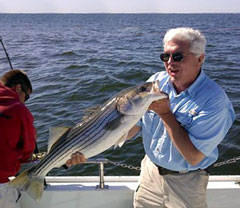
Many of the Paul’s Chrome Plating family are avid outdoorsmen - fishing, hunting, camping, boating, and motorcycle riding. We go above and beyond the guidelines set forth by the Environmental Protection Agency to ensure a clean world for ourselves and our future generations.
During plating, metals are being dissolved, electric current is passing through the solution of dissolved metals, and the dissolved metals are being deposited onto the part being plated. After each plating bath, every part must be rinsed, multiple times. This rinsing generates water containing the soluble metals copper, nickel, and chrome. It is absolutely critical that none of these metals leaves the building, unless it is plated onto your part. We all drink water. Many of us eat fish. Fred and Jim’s favorite pastime is fishing. None of us want to drink or eat copper, nickel, or chrome. This is the justifiable reason that the Environmental Protection Agency at the federal level and the Department of Environmental Protection at the state level have heavily regulated the electroplating industry.
At Paul’s, we do everything necessary to keep our world clean. Jim uses his bachelors of chemistry and 29 years of plating room experience to remove the metals from the water in a variety of ways. Some water has electricity passed through it with inert anodes that create a circuit to deposit the metals onto a plate for reuse or scrap reclamation. All the metals that can possibly be reclaimed are. Recycling is good for the planet and saves money as well. Other water evaporates from the hot plating tanks, enabling rinse water to be filtered and pumped back into the tanks. There are some rinse tanks that are continuously filtered to remove impurities. A lot of the water that we use for rinsing gets cleaned and reused for rinsing again and again. Our waste treatment system performs very well but is very time consuming and costly to operate, which adds a lot of cost to the finished product. We believe that leaving the world clean for our children and grandchildren is priceless.
Our waste treatment system contains 10 tanks that each have different chemical processes happening in them. Basically, we make the water no longer an efficient place for the metals to stay dissolved, clump the metals together, separate them from the water, press them into a cake, dry the cake, and send the dry metal cake out for further processing. Some metal can be salvaged from the cake for stainless steel or brass production. The water has the pH adjusted and is carbon filtered, and can go back for reuse.

